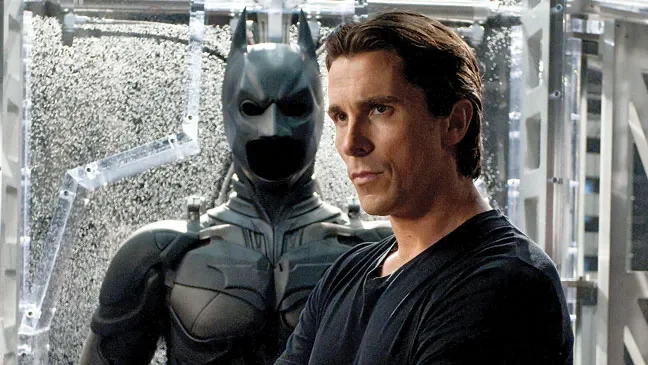Why You Should Avoid Writing Passive Characters (& How to Make Them Active)
Originally published on ScreenCraft.org in November 2021
Passive characters vs. active characters: which ones should you be writing?
We are all the main characters of our own lives, it’s true. In real life, most of us take things day-to-day, just meandering and reacting to whatever life throws our way. It’s okay for us to be pretty passive. The same cannot be said for movies.
Screenwriters need characters who are, above all else, active. Let's explore what active and passive characters are and why it's usually a better idea to avoid writing passive characters in your stories.
Active vs. Passive Characters
Generally speaking, in storytelling, there are two kinds of characters: active and passive. And movies and TV shows rely primarily on the former.
Active characters take action. They make decisions and choices that fuel the story and move it forward.
These characters have goals — from as small as a glass of water to as big as saving the world — and their determination to achieve those goals creates the stakes of the story.
Passive characters are, naturally, the opposite. They wait for things to happen instead of making them happen. They’re reactive, not proactive.
Whereas active characters impact the story, passive characters sit back and experience the story.
If you imagine an active and passive character taking a road trip together, the active character jumps into the driver’s seat and the passive character takes the passenger seat, just along for the ride.
Why Protagonists Need to Be Active
You don’t see a lot of truly passive protagonists on screen, in part because they’re just not as relatable to audiences.
Even though being relatively passive is truer to life, it doesn’t translate to the big screen. Audiences want their main characters to have a direct impact on their own story.
This is because character growth is most satisfying when it comes organically from the characters themselves, not when it is forced upon them by some external force.
For example, think about Michael Corleone in The Godfather. Though he first appears as the sheltered son, the one reluctant to get involved in the family business, it is his decisive action to kill a rival mafia boss and corrupt police officer that propels the plot forward at the story’s midpoint and springboards his own personal arc to become the family’s new Don.
If Michael hadn’t been the one to decide to kill Sollozzo and McCluskey — if, say, his brother Sonny forced him to do it, or McCluskey was going to kill him and Michael retaliated in self-defense — his character arc wouldn’t be nearly as satisfying.
Deceptively Active Protagonists
Active protagonists take action, while passive protagonists wait for things to happen and then react to them.
But there are main characters who are deceptive, seemingly passive on the surface but fundamentally active at their core.
Plenty of protagonists are passive until something happens that forces them into action.
Casablanca’s Rick Blaine appears to be a passive protagonist for most of the movie, reacting to the things that happen in his café and sticking his neck out for nobody. That is, until Act Three when he’s the one making definitive choices that impact the story’s resolution.
Even still, there can be active characters who are reactionary in nature.
In The Dark Knight, the Joker’s decisions fuel the plot and move the story forward. Batman reacts to what the Joker does, but he’s not a passive character because he’s actively trying to stop the villain --- his decisions in doing so directly affect the story.
There can also be active protagonists who, despite their actions, don’t have much of a character arc at all.
In Ferris Bueller’s Day Off, Raiders of the Lost Ark, and The Big Lebowski, the protagonists’ decisions fuel the plot of the story but don’t spur any meaningful change in the protagonists themselves.
At the end of his day of playing hooky, Ferris Bueller is still Ferris Bueller. In these cases, it’s okay for the protagonist to remain the same because the major character growth actually occurs for one of the supporting characters (In Ferris Bueller’s Day Off, it’s Cameron).
When Writing a Passive Character Is Okay
Most of the time, the main characters in movies and TV need to be active. But there are some instances in which a passive protagonist may be beneficial to the larger story.
Passive characters like Max in Mad Max Fury Road and Nick Carraway in The Great Gatsby serve as a point-of-view character for the story — we view the true hero or protagonist, Furiosa or Gatsby, through their eyes. These characters are the audience’s way into the world of the story, and therefore don’t need to be truly active because the story’s not really about them at all.
Finally, on occasion, there are protagonists who are reactionary and passive to illustrate the broader scope of a story.
The titular character in Forrest Gump, as well as Mason in Boyhood, are passive protagonists who react to the situations and circumstances of their lives accordingly. These movies are more epic in scope, focusing more on the nature of life than a particular journey. In these cases, it’s okay for the main character to be passive because the story’s about something much bigger than them.
With few exceptions, audiences prefer protagonists who are active over those that are passive. Active protagonists are easier to relate to, understand, and root for, and are often the characters that we love most.
So, When in Doubt…
Always go with active protagonists.
None of the photos in this post are my own

